If you purchase an independently reviewed item through our site, we earn an affiliate commission. Read our affiliate disclosure.
A signature feature of a Langstroth beehive is the bottom board, which holds the entrance to the beehive and closes the hive at the bottom. All other components of the Langstroth beehive stack rest upon this bottom board. The bottom board you use can be either solid or screened, and both types have their advantages and disadvantages. Beekeepers may choose build the bottom board for their beehives or purchase one. In this article, we’ll be discussing the commercially available bottom boards.
Types of Bottom Boards
As mentioned, the two types of bottom boards used with Langstroth beehives are the screened bottom board and the solid bottom board. Screened bottom boards are used for their help with ventilating the beehive and reducing the severity of Varroa mite infestations. Live mites that fall off bees go through the screened bottom board and fall to the ground. They cannot climb back into the beehive. Due to allowing entry of air into the beehive, screened bottom boards are removed in cold weather or seasons and replaced by solid bottom boards. The main disadvantage of screened bottom boards is that they sometimes cause honey bees to build comb under them, on the outside the beehive.
Solid bottom boards are great for beehive insulation. They keep the heat in the beehive and the cold out. Beekeepers in cold regions are best suited using solid bottom boards, but can have screened ones to use in warm seasons. The smell of the beehive does not escape through the bottom board. It helps with preventing predators finding out the presence of the beehive from the smell. When applying treatments for various pests, parasites and diseases of honey bees, it is best to use a solid bottom board or seal up the screened bottom board you have in place.
Overview of the Best Bottom Boards
Let us now discuss the best bottom boards to use in your beekeeping.
8. Allied Precision Industries Beehive BOTTEM Board Solid
This beehive bottom board is made and sold by Allied Precision Industries. It is made using plywood and pinewood. The pinewood makes rails into which the plywood is slid. The thickness of ½-inch for the single piece of plywood makes it strong and able to hold up well against any forces that might be applied on the plywood. The plywood does not warp over time. It is held firmly in place within the pinewood rails.
The assembly of this bottom board makes it a solid with no screen. It is great for keeping the hive smell within the beehive. That prevents predators from knowing there is a beehive in the area. Additionally, the solid bottom board conserves the heat in the beehive very well. It does not let cooling currents of air into the beehive. This is a great beehive for use in cold months of the year, or in beekeeping operations located in cold regions.
The solid construction of this bottom board makes it a stable and very durable base for your Langstroth beehive stack. This beehive bottom board is built with a beehive from a single manufacturer in mind, but it is suitable for use with any Langstroth beehive of 10-frame size. It is recommended for beekeepers using Little Giant beehives.
The front of the solid bottom board is all open. It allows for use of an entrance reducer when needed. There is no landing board incorporated however. If you want to have a landing board for your bees, you’ll have to figure out how to attach it to the bottom board.
Check Price
7. Allied Precision Industries Screen Board for Beehive
This is the screened version of the Allied Precision Industries bottom board for Langstroth beehives. It is a useful addition to your pest management set of equipment in beekeeping. The screened bottom board allows only the smallest mites and hive beetles to fall through it and onto the ground. It does not have provision for a sliding board to arrest falling hive debris for your inspection. It however does hold some of the falling debris and comes with a mite grid to help you count how many mites are caught in the screen and approximate the severity of the infestation.
The construction and materials used to make this bottom board are such that it allows for ventilation, but not for debris and dead parasites to fall out of the beehive. Pine wood is used to make the outer wooden frame of this screened bottom board. There is no landing board included in the design, so you will have to attach one if you want a landing board for your honey bees. The size of this bottom board is just right for 10-frame beehives.
Some beekeepers buying this screened bottom board have experienced problems using its due to lack of flatness. The bottom board might have one of its sided bigger than the others. Shaving down the higher side solves the problem. Due to errors in beehive construction, the bottom board might be a too tight fit. If that is the case with your purchased Allied Precision Industries screened bottom board, a wood plane helps remove the extra few millimeters of wood and make the fit perfect.
Check Price
6. Busy Bees ‘N’ More Langstroth Screened Bottom Board (10-Frame)
This screened bottom board, made and sold by Busy Bees N’ More is great for pest control. It is made using a mix of wood and a screen mesh and is built for use in 10-frame Langstroth beehives. It has wood round the sides, holding in place a frame that holds the screen mesh. This screened bottom board is great for beekeepers in warm climates. It can also be used in warm weather in colder regions. It allows for airflow into and out of the beehive. This helps with cooling the beehive, preventing moisture buildup and triggering production of more brood in the beehive. Care must be taken not to leave the screened bottom board in place when it is very cold outside.
The screen mesh on this bottom board allows for mites that get detached from the bodies of bees to fall out of the beehive. They cannot climb back into the beehive and thus infestations are slowed. When the number of mites is not too high, they can be cleared from the beehive over time in this manner. The screened bottom board also helps with control of small hive beetles, and slows down some of the effects of wax moth infestations.
At the front of this screened bottom board is a flat piece of wood that serves as the landing board for honey bees. Eastern white pine wood is used in making this screened bottom board. A plastic slide on the bottom board converts it from screened to solid configuration. It is handmade in the USA.
Check Price
5. Goodland Bee Supply GLHBTM Hive Bottom Board
This is a solid bottom board made and sold by Goodland Bee Supply. It features a simple design that meets the needs to seal up the bottom of the beehive. It is constructed by having an open frame over a board of thick plywood. The frame on the wood marks out the seating of the bottom-most beehive box. It is open on one end to provide an entrance into the beehive for honey bees. The hive entrance provided by this solid bottom board can be used as is, or with an entrance reducer.
The plywood board used to make this solid bottom board extends outwards from the entrance to give a landing board for bees. It is flat and requires no additions or modifications. It comes fully assembled and ready for use. It is a great purchase for beginner beekeepers that may not know how to put together the pieces of a dissembled bottom board. Furthermore, this solid bottom board is good for the cold seasons or cold weather. It prevents air from flowing in large currents into the beehive. This conserves the heat within the hive. Solid bottom boards also keep hive smell inside, helping with preventing predators from knowing there is beehive in the area.
This solid bottom board does not have provision to convert it into a screened bottom board, nor will it allow for pests and parasites to fall through. However, since it does not let hive debris to fall through it, it can help you estimate the severity of infestation based on the number of mites or hive beetles you find on the bottom board.
Check Price
4. Harvest Lane Honey WWSB-102 Honey Screen Bottom Board
Harvest Lane Honey is a reputable manufacturer of beekeeping equipment. The company has made the WWSB-102 bottom board with excellent craftsmanship and top quality materials, making it well built and very strong. It comfortably takes the weight of the beehive stack above it without any problems arising. The sides of the bottom board and the wide board that forms the bottom of the beehive are made from wood. Grooves in the side boards hold the bottom piece strongly in place. It can even slide out to make the bottom board screened and improve the cooling of the beehive.
The back panel of the bottom board seals up the rear of the beehive. It features a sloping piece of wood at the entrance. The sloping wood serves as a landing board for bees coming to the beehive or leaving for a foraging trip. The entrance of the beehive is left to span the whole front of the bottom board. You can install an entrance reducer on the bottom board if you so desire.
This bottom board comes fully assembled. It is ready for use right out of the box. This makes it suitable for use in beekeeping operations run by both experienced and beginner beekeepers. This is a great beekeeping product due to its strength and ability to be switched from solid to screened configurations with ease. It is made in the USA.
Check Price
3. VIVO BEE-HV00SC Screened Bottom Board Frame for Langstroth Beehives
The VIVO BEE-HV00SC is a wooden bottom board that is screened for hive ventilation and to help with pest and parasite control. The bottom board is made and sold by VIVO which has a reputation for good quality beekeeping equipment. VIVO has made this bottom board with excellent craftsmanship to fit 10-frame dimensions. The wood used to make the bottom board is durable, same as the screen mesh material. A smaller version for 8-frame beehives is available for purchase too.
This wooden screened bottom board works well with beehive boxes of any type. It can be used with a newly installed honey bee colony or one that has been in the beehive for long. Due to its ease of use and intuitive design, the bottom board can be used by both beginners and experienced beekeepers.
The Vivo screened bottom board boasts superior ventilation properties for your beehive. It promises to keep the beehive cool and help prevent buildup of moisture in the beehive. This makes it a good choice of equipment for beekeepers practicing beekeeping in hot climates. It is also useful for the warm months of summer. The bottom board comes assembled. You only need to place it on your beehive stand and then stack the beehive boxes you are using over it.
The entrance on this screened bottom board it quite wide -it spans the width of the bottom board. When fully open, the entrance allows the bees to move with ease into and out of the beehive. It can also be used with an entrance reducer if necessary. The bottom board also has a landing board, so you do not need to make modifications to it or buy additional parts.
Check Price
2. Farmstand Supply Ultimate Bottom Board (10 Frame)
The Farmstand Supply Ultimate Bottom Board is a 10-frame size for beekeepers using Langstroth beehives. It is made using molded technopolymer. This deviation from using wood on the bottom board makes the equipment last longer. There’s no chance of bees building comb on this material, so that’s a plus. The bottom board holds the entrance to the beehive and features removable and reversible entrance reducers and a mouse guard. These two items for security and hive management come with the bottom board and work very well.
This bottom board features a screen which is used for ventilation and pest control uses. Stainless steel is used to make the mesh. Under the mesh is a stainless steel slide-out inspection board. It allows you to close up the bottom board and catch items that would have otherwise fallen from the beehive. The items on the sliding board inform you about the status of the hive and infestations by pests and parasites of honey bees.
The design of the Farmstand Supply Ultimate Bottom Board incorporates an angled edge, which helps to drain water off the bottom board and away from the beehive. At the entrance of the beehive is a landing board, which has a textured surface to give bees a good grip on the board. There are also hive strap notches on the bottom board. These allow you to strap the whole beehive stack together so that it does not fall in strong winds. Additionally, there are security pins and security screw holes on the bottom board, which make it easy to secure it to the beehive for added strength.
Check Price Read Full Review
1. GreenBeehives IPK Screened Bottom Board & Small Hive Beetle Trap
GreenBeehives is a manufacturer and seller of beekeeping supplies. The company has many good quality items available to beekeepers. This GreenBeehives bottom board is made using high quality wood. The assembly of the bottom board shows excellent craftsmanship. The bottom board features a 6 x 6 screen that allows beehive debris, pests and parasites of honey bees to fall through it. Honey bees are good at chasing hive beetles from the beehive when they can see them.
Right under the screen of this bottom board is a tray to help with the control of mites and hive beetles. Place oil on the tray to kill the adult and larvae of pests and parasites of honey bees that fall through the screen. This setup enables the beekeeper to forgo the use of chemicals. It promises to rid the beehive of small hive beetles within 2 days of proper use. This is unlike other treatments that work in 2-4 weeks.
This screened bottom board is great for hive ventilation. Its tray slides out completely from the bottom board to allow maximum airflow through the screen. If you want to close up the beehive, slide the tray back into the bottom board to restrict airflow through the bottom board. For best results when you want no air coming into the beehive such as in winter, you may use a solid bottom board.
GreenBeehives has made two versions of this bottom board. One is for 8-frame hives while the other is for 10-frame beehives. The options allow beekeepers using any size of Langstroth beehive to enjoy the greatness of this screened bottom board.
Check Price
Inspection of a Beehive Bottom Board
Beehive maintenance requires you to check on it at certain intervals. During a hive inspection, all parts of the beehive including the bottom board are checked. With a screened bottom board, you should check the slide-out tray if there is one installed. Uncapped cells produce some wax debris in the beehive. It falls onto the bottom board, where it is arrested if the slide out tray is in place. With a solid bottom board however, it remains in the beehive. A screened bottom board allows debris to fall through it, so you might not be able to read much from it.
If the slide-out tray was left in before your inspection, look for Varroa mites being on it, or on the surface of a solid bottom board when you are using one. If there are mites on the bottom board, consider treating the beehive to stop the infestation. Mite fall due to treatments applied prior to inspection helps you to determine their effectiveness.
The slide-out tray can inform you to the presence of wax moths and most other pests and parasites of honey bees. Larvae of wax moths and other pests such as small hive beetles might be found on the tray of the bottom board. Adults too might be lurking there sometimes. Every time you see some sign of pest infestation, analyze the extent of it and decide what treatment to apply if necessary. You should be vigilant about pests and the signs are often found by examining the bottom board. If you do not see the pest itself, its feces might be on the bottom board. Experienced beekeepers can tell the difference between the various types of feces found.
Another thing you should check during inspection is debris on the bottom board. Items falling from the hive will settle there. Often, dead bees and wax are found on the bottom board. Clear the beehive debris during the inspection to maintain good hive hygiene.
When to Remove a Screened Bottom Board
1. During Winter
Screened bottom boards are not often suitable for use on a beehive all throughout the year. Despite the advantages they have, a screened bottom board can cause problems in the beehive when used at the wrong time. In cold weather and as winter approaches, it is best to remove the screened bottom board and replace it with a solid one. Sometimes, you can just seal up the screened bottom board using its slide-out tray if there is one installed and everything will be fine.
Screened bottom boards left on the beehive in cold weather, allow cold air and moisture to enter the beehive. There, condensation and excess exposure can kill bees. It causes a lot of resources to be expended in keeping the beehive warm. More bees die because of this and the colony might be left very weak. A sealed hive retains heat better and gives you a strong colony after winter is past. Strong colonies in spring give you higher yields of beehive products at the end of the production year.
2. During Treatment
When applying treatments to the beehive, it might be necessary to remove the screened bottom board. Application of vapors and fogs requires you to seal up the beehive, so that the treatment vapor does not escape. A screened bottom board will allow escape of the vapors and render your treatment useless or less effective than could be realized. Once the treatment is done and enough time has passed, you may return the screened bottom board to the beehive.
Conclusion
Bottom boards are an essential component of any Langstroth beehive. Both screened and solid bottom boards have their time when they are to be used or removed. Use any of the best bottom boards discussed in this article to get the most out of your beekeeping experience.
What are thoughts on the beehive bottom boards discussed in this article? Leave a comment below and let us know.
 BeeKeepClub Resources and Guides for Beekeepers
BeeKeepClub Resources and Guides for Beekeepers
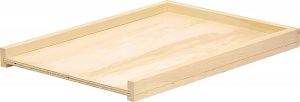
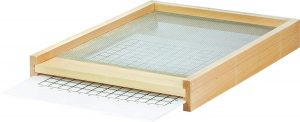
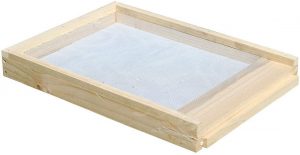
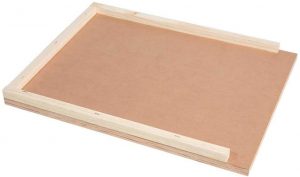
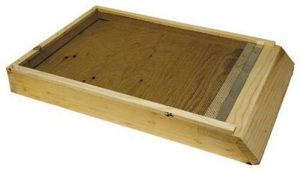
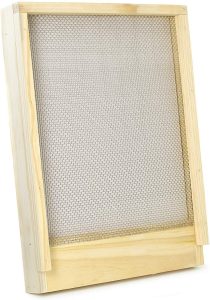
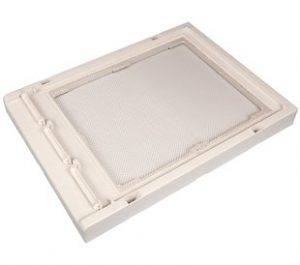

This is the BEST article I’ve seen about bottom boards. Thank you very much.
Thank you! You are most welcome!